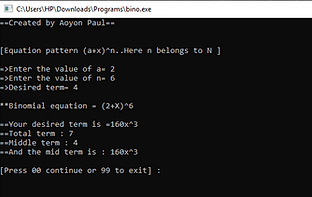Research Interest
Li-ion Battery, Materials Science, Computational Fluid Dynamics, Design Optimization, Biomechanics
Journal
Study of temperature cycling of commercial rechargeable lithium-ion batteries
Published In: Future Sustainability (FUSUS) Journal powered by Future Publishing LLC (Arkansas, United States)
-
Abstract: Lithium-ion batteries, a popular electric energy storage device, have high energy density and impressive working performance. However, the temperature affects its life cycle, capacity, and performance. Different effects are generated inside the battery for the different temperature conditions. It is necessary to study their thermal and electric characteristics in various thermal conditions since electric energy storage devices are used in various applications at low or high temperatures. In this study, the experimental analysis was performed to observe how a battery cell behaves above room temperature for a different 18650 cylindrical battery cell with a capacity of 5200 mAh. The testing temperature for this experiment was at 28˚C, 50˚C, 60˚C, 70˚C, and 100˚C. It is noted that the capacity of the battery cell fades drastically at high temperatures compared to low temperatures due to internal short circuits occurring at high temperatures.

Conference Proceedings
Numerical Analysis of a Pouch Cell During Discharging at Different C-Rate
Published In: International Conference on Mechanical Engineering and Renewable Energy 2021 (ICMERE2021)
-
Abstract: High energy density, lower self-discharge rate, and having no memory effects are the major advantage of a lithium-ion battery. The usage of lithium-ion battery increasing day by day because of their impressive working performance. To get an idea of how a cell discharges at different C-rate and how temperature arises inside the cell during discharge, a numerical analysis was performed for a pouch cell. When the cell was discharged at 0.6C, 1C, and 2C, it was found that the temperature rapidly increased inside the cell when the C-rate was 2C compared to the others. The simulation was carried out in ANSYS 2019 R2 version using multi-scale multi-domain battery model which is available in fluent.


Computational Analysis of Horizontal Axis Wind Turbine Blade Profiles at Low Wind Speed
Published In: 6th International Conference on Mechanical, Industrial and Energy Engineering 2020 (ICMIEE 2020)
-
Abstract: To ensure maximum energy efficiency and find the optimum operating conditions of a wind turbine, an analysis of the blade profile of a horizontal axis wind turbine was carried out. In this study, a wind turbine blade’s root and tip profiles were simulated to find the aerodynamic characteristics such as coefficient of lift (CL), coefficient of drag (Cd), and sliding ratio (CL/CD) at a different angle of attacks and wind speeds. A computational analysis of NREL’s S822 and S823 airfoils were performed to find the range of suitable operating angle of attack at low wind speed. The analysis showed that when the two airfoil profiles were used in the same wind turbine blade, the operating angle of attack is preferable to lie between 6° to 8° for a wind velocity of 3, 4, and 5 m/s, respectively. S823 airfoil showed good aerodynamic characteristics compared to S822 airfoil. NREL’s S823 (Root) and S822 (Tip) airfoils can be used in a wind turbine having a blade length of 1 to 5 m to extract energy from wind.


A REVIEW OF DIFFERENT SHAPED DIMPLE EFFECTS ON AEROFOIL SURFACES
Published In: International Conference on Mechanical Engineering and Renewable Energy 2019 (ICMERE2019)
-
Abstract: Good aerodynamics characteristic means the improved lift force and less drag force in the body. It also implies better stall angle phenomena. An airfoil is a streamlined body. The surface containing dimples shows greater aerodynamic characteristics than a plane airfoil. Imposing dimples on the airfoil surface create turbulence by creating vorticities that delay the boundary layer separation. And resulting in a decrease of pressure drag and an increase in the angle of the stall. The cross-section of the dimples can be semispherical, v-shaped, square-shaped, rectangular-shaped, hexagonal shaped. In this paper, a review of all kinds of dimples effect on the airfoil surface is shown in a sequential manner with respect to a different angle of attack (AOA).

MODIFICATION OF A WATER VEHICLE TO PREVENT ACCIDENT IN WATER
Published In: International Conference on Mechanical Engineering and Renewable Energy 2019 (ICMERE2019)
-
Abstract: Overweight causes thousands of accidents in water vehicles every year. This paper proposes a new technology coupled with the main design of water vehicles to reduce the accident. This technology includes water level indicator, Arduino, GSM module, gate valve. When the vehicle has crossed the water level indicator, it will respond with the action so that the main engine stops and transfers the warning message to the authority until overloading is reduced


Projects
-
IoT based home automation system.
-
Industrial robotic arm with multi-functional activity.
-
Arduino Based-Bluetooth controlled RC car.
When I was in high school, I was first introduced to C programming. And I enjoyed the whole journey to learn it. In high school, we were taught about the periodic table, how to calculate body mass index, and so on. I was so curious to implement those topics into code and did the following projects.
-
Periodic Table
-
Binomial Expression
-
Calculating body mass index

Periodic Table

Binomial Expression

Calculating Body Mass Index
